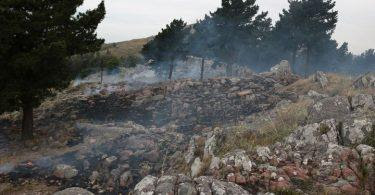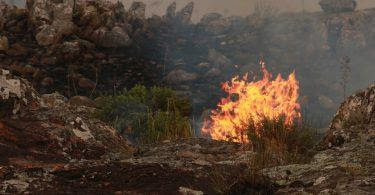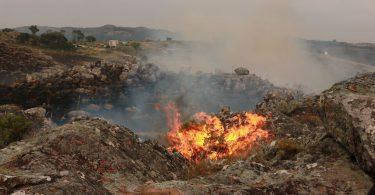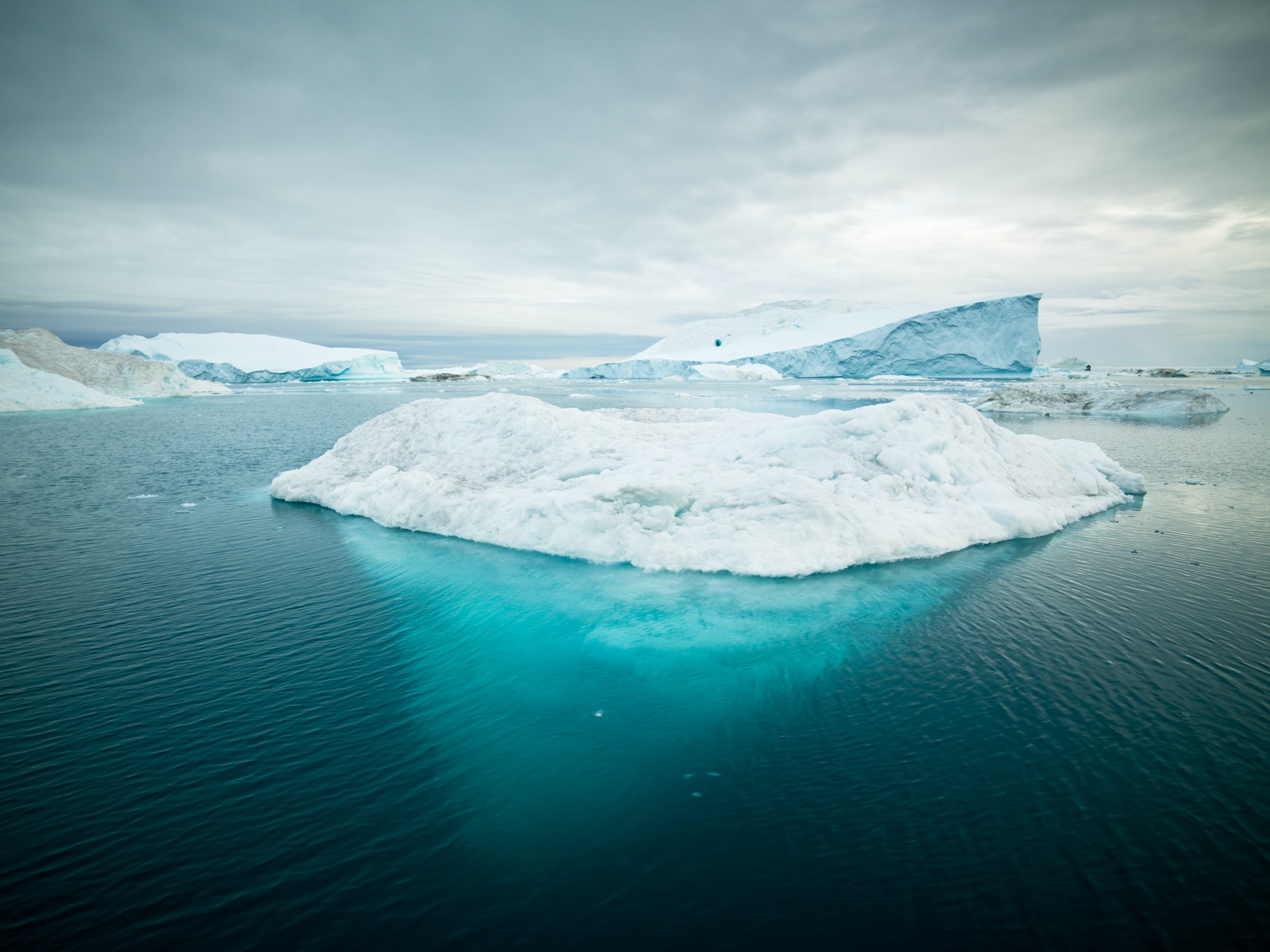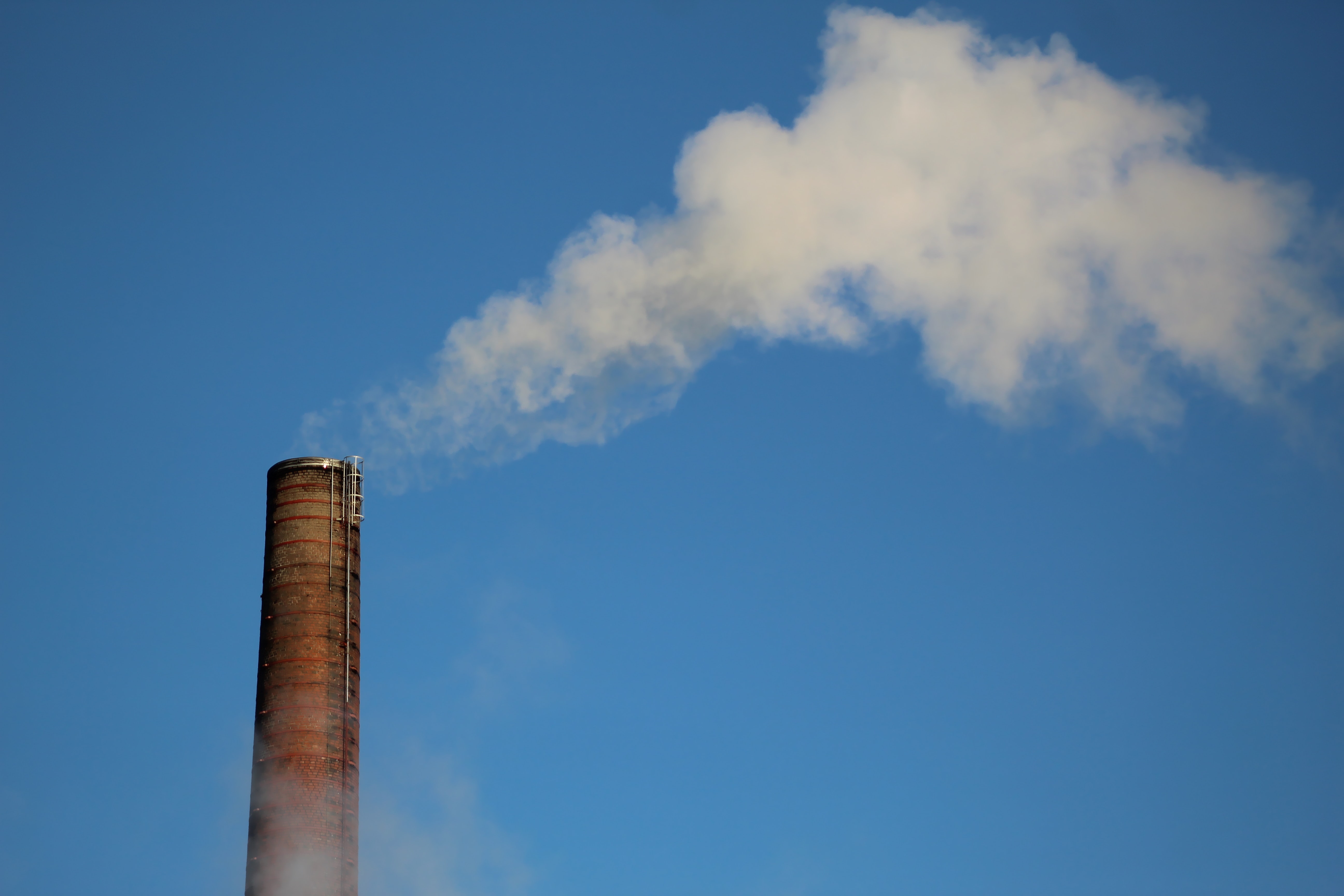Neste momento, mais de 1.600 brigadistas do Centro Nacional de Prevenção e Combate aos Incêndios Florestais (Prevfogo), do Ibama, estão trabalhando em todo o Brasil. Em 2021, o Instituto Nacional de Pesquisas Espaciais (Inpe) já registrou mais de 110 mil focos de queimadas, o que promete superar o ano passado, o pior desde 2008. Mas, enquanto as chamas se alastram país afora, o chefe de brigada Bolivar Xerente conta que a situação na Terra Indígena (TI) Xerente, onde vive, no Tocantins, está menos crítica do que em outros locais. “Conseguimos reduzir o capim seco, que é o combustível. Quando a gente fez as queimas de baixa intensidade, conseguimos preservar. Se alguém colocar fogo agora, acidental ou criminoso, não vai ter aquele incêndio de grande proporção”, afirma.
A ciência está ao lado de Bolivar ao apontar o próprio fogo como solução para os incêndios que se espalham pelos diferentes biomas brasileiros, ameaçando a biodiversidade e agravando as mudanças climáticas com a liberação de gases de efeito estufa na atmosfera. Quando utilizado de maneira controlada e monitorada, nos lugares e épocas certas, o fogo pode ser benéfico, como sabem há séculos os povos indígenas que aprenderam a manejá-lo de forma a preservar o ambiente onde vivem.
Essa é uma das principais premissas do Manejo Integrado do Fogo (MIF), que pode virar política nacional caso o Projeto de Lei (PL) 11.276/2018 seja aprovado pelo Congresso Nacional – hoje, a matéria aguarda votação na Câmara dos Deputados em caráter de urgência. O projeto, apresentado pelo Executivo em 2018, é item prioritário de um “pacote ambientalista” que deputados federais se articulam para votar antes da próxima Conferência do Clima da ONU, a COP26, que ocorrerá em novembro na Escócia, como forma de minorar as pressões internacionais.
Fontes ouvidas pela Agência Pública garantem que o PL que institui o MIF é consenso político e não deve enfrentar dificuldades para ser aprovado. “Ele não tem polêmica entre ruralistas e ambientalistas”, diz Suely Araújo, especialista sênior em políticas públicas do Observatório do Clima e presidente do Ibama na época em que a proposta foi elaborada. De acordo com Suely, a bancada ruralista não se opõe à matéria porque ela “não interfere no negócio deles, na verdade, ajuda”.
O MIF é aplicado em maior escala pelo Prevfogo/Ibama por meio do programa Brigadas Federais (BRIFs), que desde 2014 inclui esquadrões em terras indígenas. Em 2021, 45 brigadas indígenas reúnem 800 pessoas de cerca de 50 povos em 11 estados. Os brigadistas são contratados pelo governo federal por seis meses no ano, pouco antes e durante a época seca – que pode variar dependendo do bioma –, e recebem por volta de um salário-mínimo por mês (o valor é maior para cargos de chefia e supervisão).
Indígenas dos povos Manoki e Myky, do Mato Grosso, iniciando as ações de Manejo Integrado do Fogo em maio deste ano
“O conceito de Manejo Integrado do Fogo abrange tudo que é feito para proteger uma área contra incêndios florestais, desde a prevenção até o combate”, destaca Rodrigo Falleiro, analista ambiental do Prevfogo/Ibama e um dos principais pesquisadores brasileiros do tema. Quando ele fala em prevenção, refere-se, por exemplo, a duas modalidades de queimas: as prescritas, feitas para fins de preservação ambiental ou pesquisa, e as controladas, realizadas para abrir roças e pastos – ambas executadas com planejamento, monitoramento e objetivos predefinidos.
A era do “fogo zero”
Antes dessa abordagem, a política adotada pelo Ibama era a do “fogo zero”, que via o fogo como prejudicial em todas as circunstâncias e tinha como objetivo evitá-lo a qualquer custo. No entanto, com o passar dos anos, pesquisadores perceberam que alguns ecossistemas – sobretudo nos biomas Cerrado e Pantanal – são, na verdade, dependentes do fogo. “Se não houver uma intervenção de fogo periódica nesses ecossistemas, eles começam a perder vivacidade; muitas plantas e animais que vivem naquele lugar não conseguem mais viver. E, além de ajudar na preservação da biodiversidade, as queimas ajudam a evitar incêndios florestais, por acúmulo de combustível, e a produzir recursos naturais para as comunidades”, explica Falleiro.
Em 2007, o Ibama promoveu a primeira experiência de resgate de conhecimentos sobre o uso do fogo com um povo indígena do Cerrado, os Paresi, do Mato Grosso – o levantamento se deu sobretudo com o objetivo de analisar os efeitos do fogo sobre os animais e as plantas frutíferas.
 Brigadistas em combate a incêndio na TI Parque Indígena do Xingu, no Mato Grosso Foto:Vinicius Mendonça/Ibama
Brigadistas em combate a incêndio na TI Parque Indígena do Xingu, no Mato Grosso Foto:Vinicius Mendonça/Ibama
A metodologia ali desenvolvida foi sendo aperfeiçoada ao longo do tempo e se tornou o que hoje se conhece como Manejo Integrado do Fogo, que associa as técnicas de prevenção e combate a incêndios às necessidades específicas do ecossistema e das comunidades que o habitam. “É a mistura da caixa de ferramentas do conhecimento técnico-científico, que a gente adquire com a academia, universidades e ciência, com a caixa de ferramentas do conhecimento tradicional”, diz Alexandre Pereira, brigadista e analista ambiental do Prevfogo/Ibama que há anos trabalha com brigadas indígenas do Mato Grosso do Sul.
O MIF é mais relevante em ecossistemas dependentes do fogo porque as queimas prescritas, além de beneficiarem fauna e flora, servem para retirar o excesso de material orgânico inflamável e impedir que um foco de fogo acidental saia de controle e se torne um incêndio. Porém, segundo Falleiro, ele se aplica também a áreas de floresta, principalmente para auxiliar na abertura de roças tradicionais. “Os brigadistas entram, se organizam para queimar todos no mesmo dia, a comunidade ajuda, os brigadistas vêm com os equipamentos e procuram fazer essas roças junto para evitar que ocorram grandes incêndios, até porque a queima de roças é bem na época da seca”, aponta.
A aliança entre conhecimento técnico e tradicional
Hoje é consenso científico que as políticas de “fogo zero” foram prejudiciais a ecossistemas que evoluíram com o fogo porque favoreciam a ocorrência de grandes incêndios. Mas, quando elas ainda eram a estratégia oficial dos principais órgãos ambientais do país, os anciões indígenas da região já sabiam de seus riscos.
Bolivar Xerente conta que, quando começou a trabalhar na brigada da TI Xerente, ouviu um alerta de um dos “velhos” de seu povo. “Chegamos na aldeia dele e falamos que não podia colocar fogo. Ele disse: ‘Meu filho, vocês não vão dar conta de conter esse incêndio, o Cerrado necessita de você colocar um fogo controlado’. E falamos: ‘Não, a gente segura [o incêndio], a gente foi capacitado’. A gente segurou em julho, agosto, e no final de setembro uma pessoa – não foi intencional – fez um aceiro, mas começou a ventar muito, e um fagulho caiu no capim seco”, relembra.
“Esse fogo pegou e só parou quando topou o rio Tocantins. E lembramos da história do velho, que me chamou depois e disse: ‘Lembra do que eu falei pra você? [Não adianta] vocês aplicarem só o conhecimento técnico, que é feito no escritório. A gente, indígena e sertanejo, é da roça, a gente convive com isso, tudo aquilo tem um porquê, tem um objetivo’. Aí começamos a entender”, descreve.
Na contramão do que diziam os líderes indígenas, os órgãos ambientais promoviam ações educativas nas comunidades para abordar os malefícios do fogo e desestimular seu uso em qualquer situação. “Aí muito do que esses indígenas tinham de conhecimento de uso do fogo, de interação com o ambiente, acabou se perdendo”, assinala Pereira. “Em vez da gente criar uma solução, a gente criou um problema, e agora estamos tentando reverter.”
Em 2012, algumas mudanças abriram a possibilidade de uma nova abordagem, entre elas a permissão de manejo do fogo pelo novo Código Florestal Brasileiro. Pouco depois, em 2014, as primeiras brigadas federais indígenas foram contratadas. Parcerias internacionais também foram importantes, como a proporcionada pelo projeto Cerrado-Jalapão, entre os governos de Brasil e Alemanha, que capacitou técnicos brasileiros.
Com as novas diretrizes, a dinâmica de trabalho mudou. “Antes a gente chegava e impunha como ia ser o regime do fogo nas comunidades. Chegávamos e dizíamos: ‘Olha, aqui no Cerrado não pode ter fogo”, afirma Falleiro. Com a nova abordagem, “em vez de chegar dizendo que o fogo faz mal, [agora] a gente procura ouvir mais o conhecimento deles e comparar com o conhecimento científico, que em geral corrobora 100% com o conhecimento tradicional”. Além disso, para Pereira, a comunicação gera uma “relação de confiança entre o órgão público e as comunidades tradicionais”.
Entretanto, mesmo que o potencial de dano da política de zero tolerância ao fogo esteja comprovado, o MIF, de acordo com Falleiro, ainda é “exceção” no Brasil, já que poucos estados o aplicam. Por isso, é considerada essencial a aprovação da Política Nacional de Manejo Integrado do Fogo, elaborada principalmente por servidores do Ibama e ICMBio, com apoio de outros órgãos federais, e proposta enquanto projeto de lei pela gestão de Michel Temer em 2018.
Além de padronizar procedimentos de prevenção e combate aos incêndios florestais no país, a proposta prevê, entre outros pontos, a criação de um comitê nacional que comandará a articulação institucional para execução da política nacional nos diferentes biomas brasileiros. Como presidente do Ibama à época, Suely Araújo acompanhou todo o processo de construção do texto. “Ele vem para consolidar a atuação e formalizar o que já ocorre há vários anos. Dá uma institucionalidade do ponto de vista organizacional, diz quais órgãos vão participar da organização [da Política Nacional de Manejo do Fogo]”, indica.
Ela conta que não houve dificuldades para que a iniciativa fosse encampada pelo governo federal em 2018 e que por isso pensava que seria aprovada na Câmara em poucos meses. “Mas mudou o governo e as coisas enrolaram. Ficou com uma falta de atenção, ficou parado porque era um projeto do Executivo e o Executivo não estava nem aí. Na verdade, quem está puxando isso agora é o próprio Congresso”, destaca.
A deputada federal Rosa Neide (PT-MT), coordenadora da Comissão Externa de Queimadas em Biomas Brasileiros da Câmara e responsável pelo requerimento de urgência para a votação do projeto, explica que a ideia de resgatá-lo surgiu depois da temporada de incêndios florestais do ano passado. “Nós discutimos fortemente o que aconteceu em 2020, que foi o maior incêndio que o Pantanal já viveu, e aí a gente percebeu que aos entes federados, por mais que discutam – especialmente os estados e os municípios –, ainda faltam a orientação nacional e as definições legais”, afirma.
De acordo com a parlamentar, o presidente Arthur Lira (PP-AL) já teria avisado “aos líderes que tem todo interesse que seja rápido” o trâmite da proposta, que é consensual e deve ser aprovada sem grandes mudanças. Para Rosa Neide, o que justifica o amplo apoio à matéria são a sua qualidade técnica e o momento político favorável, com a aproximação da COP26. “O Brasil está sendo muito cobrado. O olhar de fora para nós tá sendo muito forte, muito severo. O Brasil não está fazendo o dever de casa corretamente, então tudo ajuda a impulsionar para que tenhamos uma política correta de manejo do fogo.” Sem esse tipo de ações, questiona a deputada, “quando chegar na COP, o Brasil vai dizer o quê?”
 Manejo Integrado do Fogo é apontado por pesquisadores como estratégia fundamental para prevenir incêndios florestais Foto:Vinicius Mendonça/Ibama
Manejo Integrado do Fogo é apontado por pesquisadores como estratégia fundamental para prevenir incêndios florestais Foto:Vinicius Mendonça/Ibama
Alternativa contra as mudanças climáticas
Como a redução de focos de incêndio ou ao menos a atenuação de sua intensidade significam queda nas emissões de gases de efeito estufa, a Política Nacional de Manejo Integrado do Fogo é vista por especialistas como uma arma importante para mitigar as mudanças climáticas.
E os resultados já podem ser observados nas TIs Xavante e Araguaia, as primeiras em que o Ibama realizou queimas prescritas junto à comunidade, em 2015. Segundo artigo publicado no início de setembro, assinado por seis pesquisadores – entre eles Rodrigo Falleiro –, entre 2014 e 2018 o MIF foi responsável pela diminuição das áreas afetadas por incêndios em ambas as TIs, em comparação à fase em que predominaram as políticas de “fogo zero” (de 2008 a 2013).
O levantamento, feito com base em imagens de satélite, indica ainda que nos dois locais as queimas prescritas “efetivamente reduziram a ocorrência de grandes incêndios florestais, o número de grandes e médias cicatrizes na vegetação, a intensidade do fogo e emissões de gases de efeito estufa”. O estudo destaca também que esse tipo de queima é reconhecido como uma estratégia de mitigação climática em ecossistemas propensos ao fogo, “uma vez que as queimas de baixa intensidade não consomem todo o combustível e, consequentemente, liberam menos gases de efeito estufa do que os incêndios”.
As análises científicas se traduzem na realidade dos povos indígenas: Bolivar Xerente enxerga impactos positivos em termos de subsistência. “Melhorou muito a questão das frutas para a nossa comunidade. No início, quando a gente trabalhava com fogo zero, tínhamos dificuldade de colher frutas. A comunidade Xerente é extrativista, cata semente, e com a semente pode plantar, fazer remédio – temos muitos remédios tradicionais. O Manejo Integrado do Fogo veio para melhorar essa situação, para a gente preservar, fazer remédio tradicional, as frutas, [atrair] as caças”, aponta.
O MIF pode ajudar também na redução de incêndios em florestas tropicais úmidas, como a Amazônia. Quando preservadas, normalmente não desenvolvem incêndios de grande intensidade e velocidade, porém estão ficando cada vez mais suscetíveis ao fogo, de acordo com os servidores do Prevfogo/Ibama ouvidos pela Pública. “A cada vez que esses incêndios passam na floresta, eles a tornam mais inflamável”, diz Falleiro. “Quanto mais a gente demora, mais floresta degradada a gente está produzindo. O problema não é só o que está pegando fogo hoje, mas é a condição de vulnerabilidade a grandes incêndios que a gente está construindo para o futuro ao insistir em políticas de fogo zero na maior parte do país.”
Foi justamente para evitar a degradação de um ponto específico da floresta que uma brigada na TI Yanomami, em Roraima, foi treinada nos últimos meses e vai entrar em ação pela primeira vez em novembro – o período de seca no estado começa só agora, em setembro, e vai até abril. “Ali é uma área de contato, muito próxima a assentamentos, ao lado de uma Floresta Nacional Federal [Floresta Nacional de Roraima] que já está bastante degradada pelo fogo. O fogo sai do assentamento, passa pela Flona e vai para a terra Yanomami”, explica Joaquim Parimé, coordenador do Prevfogo/Ibama em Roraima. A intenção, de acordo com ele, é construir aceiros – uma faixa de terreno livre de vegetação – impedir que o fogo avance sobre a floresta naquele local, próximo aos municípios de Mucajaí e Alto Alegre.
Para além do combate às chamas, uma das prioridades da brigada da TI Yanomami será auxiliar os agricultores indígenas locais a fazer a roça – atividade que, segundo Parimé, se não é feita de maneira controlada, apresenta alto risco de descontrole. “O grande objetivo é fazer com que a queima fique circunscrita somente à área que foi derrubada, que o fogo não escape e não cause um incêndio”, salienta.
Esta reportagem faz parte do especial Emergência Climática, que investiga as violações socioambientais decorrentes das atividades emissoras de carbono – da pecuária à geração de energia. A cobertura completa está no site do projeto.
Reportagem originalmente publicada na Agência Pública
Esta história foi partilhada como parte do World News Day 2021, a campanha global para destacar o papel fulcral do jornalismo baseado em fatos ao serviço da humanidade, no fornecimento de notícias e informações fiáveis . #JournalismMatters





